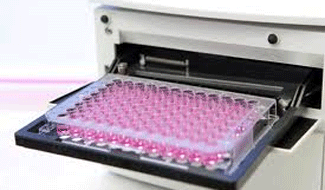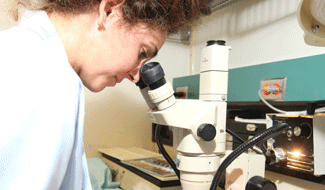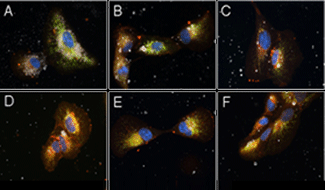About the Toxicity Assessment Division (TAD) of EPA's National Health and Environmental Effects Research Laboratory
 Cell-based approaches to assessing endocrine disrupters
Cell-based approaches to assessing endocrine disrupters Student researching developmental neurotoxicity
Student researching developmental neurotoxicity Visualization of nanoparticles in cells
Visualization of nanoparticles in cellsWhat We Do
The Toxicity Assessment Division (TAD) addresses toxicological responses and mechanisms for effects on reproduction, pregnancy, pre- and postnatal development, and the nervous and endocrine systems. Research strategies include advancing chemical screening, including assessing in vivo predictive value of in vitro test methods and chemical-specific and mixtures toxicity assessment that will better predict the adverse effects of chemicals and other stressors across biological levels of organization. TAD researchers develop animal models of disease and evaluate assumptions and hypotheses generated by predictive, systems biology models that link environmental condition to the health and well-being of people and society.
Adverse Outcome Pathways (AOPs)
TAD scientists are developing adverse outcome pathways (AOPs) for the nervous and endocrine systems and reproductive and developmental toxicity. High-throughput assays to elucidate and predict the potential for environmental pollutants to be toxic to the thyroid system are being developed in concert with a thyroid AOP.
Children’s Environmental Health
TAD scientists are evaluating the effects of combined exposures to chemical and nonchemical stressors during development on life-long health and risk of disease and exploring potential underlying mechanisms, including alterations to the epigenome.
Assessment of Drinking Water Contaminants
TAD scientists are assessing the safety of real-world mixtures of drinking and surface water contaminants by developing cumulative risk models and in vitro approaches to screening by chemical class and researching the toxicity of harmful algal blooms.
Cellular and Target Organ Effects
TAD scientists are developing imaging and other cytometric approaches to study nanomaterials and are assessing the toxicity of these emerging chemicals to the visual and cardiovascular systems. TAD scientists also are developing complex 3-D human cell cultures to model fusion during embryonic development, a key event whose failure is implicated in many birth defects.
Organization
John M. Rogers, Director
